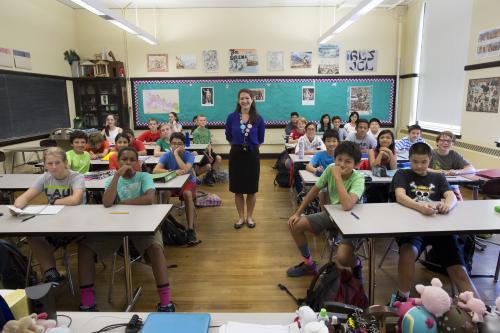Louisiana, home to the first Jim Crow law in 1890, holds an important lesson about how to diversify the teaching profession.
In 1969, a small group of African-American teachers, coaches, band directors, and principals formerly employed by Tangipahoa Parish, a county 40 miles northwest of New Orleans, sued the school board. They alleged that the district was engaging in “a policy and practice of coercing and intimidating Negro teachers in an effort to force Negro teachers to resign their positions.” The case lagged for seven years, but ultimately the faculty emerged victorious, and the school district agreed to an unusual consent decree: It would hire every qualified black teacher until the ratio of black to white teachers grew to 40:60, mirroring the student racial composition.

The legal and moral victory notwithstanding, for more than 35 years the agreement sat on a shelf, largely ignored by the district and unenforced by the court. But in 2010, with a boost from NAACP attorneys, the court reaffirmed the desegregation order, this time requiring the district to submit written explanations every time a qualified black applicant was passed over for a white one.
What was the result of this mandate and why is it important? We considered these questions in our new research paper in order to shed light on how to diversify the teaching profession. Studies have shown that students—especially minority students—benefit from having access to racially diverse teachers. In fact, according to one recent study, “having just one black teacher in third, fourth or fifth grade reduced low-income black boys’ probability of dropping out of high school by 39 percent.” Yet while more than 50 percent of public school students are minorities, fewer than 20 percent of teachers are (and even fewer are men of color). In a series of recent posts, the Brown Center has documented that this problem is widespread across the nation, and has proposed innovative ways to measure and address it.
Up until this point, much of the policy focus has been about how to increase the supply of minority teachers. African-American and Hispanic college graduates are less likely to hold a degree in teaching. Increasing this rate would help diversify the pipeline into teaching. Any long-term solution to increasing diversity must take into account increasing the supply of a diverse teaching workforce—but these policies necessarily make their impacts with a time lag.
Our research found that Tangipahoa Parish offers a faster approach. Just four years after the desegregation order was put in place, the share of black teachers had increased by approximately 5 percentage points relative to other districts in Louisiana—a substantial increase in a reasonably short period of time—from 17 to 22 percent (Figure 2). The increase appeared to be driven by a spike in the rate of hiring of new black teachers as opposed to changes by race in the rate of retirements or teacher departures, although the impact of the court order on black new teacher hiring is not statistically significant.
The “representation gap”—defined as the difference between the share of students that are black and the share of teachers that are black—declined by between 2 and 4 percentage points, depending on how we estimated this relationship (see Figure 2). And there were strong increases in the percent of black teachers even in schools that have a predominately white student body and schools that had low shares of black teachers at baseline.
We were not able to detect any impacts—either positive or negative—on student achievement from the change in the racial composition of the teacher workforce. Although there was ex ante concern that the court order would lead to a reduction in teacher quality, this proved untrue: In qualitative interviews conducted last summer, most teachers described the quality of their department’s teachers in recent years as improving.
The Tangipahoa experiences suggest that in order to efficiently diversify the teaching profession, we should turn more attention to the demand side of the teacher workforce equation. A large share of minorities with teaching degrees are not currently working as teachers. This is an untapped supply of qualified minority teachers who made it through the pipeline and did not find a teaching position. Many businesses have been taking steps to reduce biases in their hiring processes with a goal of diversifying their workforces. Should more school districts be doing the same? Could something be going wrong at the hiring stage that systematically disadvantages minority teacher candidates?
Of course, a court order is not the only way to increase hiring of minority candidates. Districts can voluntarily change their hiring practices in order to seek a more diverse teacher mix. In particular, there is evidence that adopting “soft” affirmative action policies—that is, policies that change the composition of the candidate pool, rather than changing the criteria used in the hiring process—can be very effective. Most famous is the National Football League’s “Rooney Rule,” which requires teams to interview at least one minority candidate for any head coaching vacancy. After the NFL adopted this policy, minority candidates were 20 percent more likely to fill a head coaching vacancy than before. Based on this success, other companies like Facebook have followed suit. Experts also recommend steps like carefully reviewing the wording of job postings to include pro-diversity language, expanding the recruitment pool, and standardizing the interview process across candidates.
Demand-side policies—including hiring reforms voluntarily adopted by schools and districts, as well as when necessary court-ordered reforms—can substantially increase the share of minority teachers in the classroom. More schools and districts should examine their recruiting and hiring processes to promote diversity.







Commentary
It is time for a ‘Rooney rule’ for teachers
December 11, 2017